It looks like you're using an Ad Blocker.
Please white-list or disable AboveTopSecret.com in your ad-blocking tool.
Thank you.
Some features of ATS will be disabled while you continue to use an ad-blocker.
share:
A friend of mine recently saw an object in the sky that had blinking colors and got brighter and disappeared off and on. Now I have seen these
patterns of lights before too, so I understand why we think they may be UFO's; when any of us see them. The atmosphere (color spectrum),the distance
and the angle of the view all play a part.
Jupiter and Venus are the most common planets mistaken; Vega, Capella, Betelgeuse Rigel and Aldebaran are some of the more common stars.
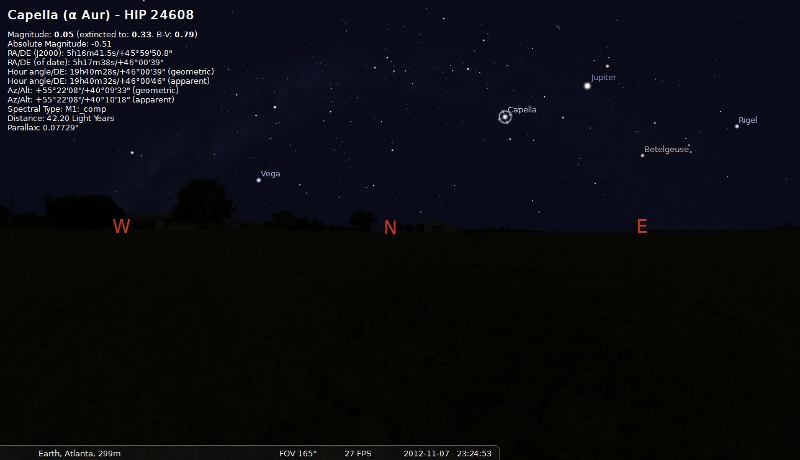
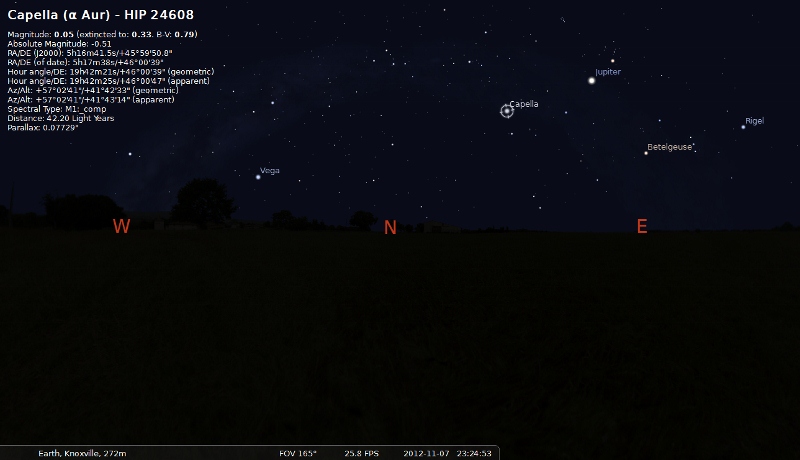
Sometimes, a star tends to twinkle more than normal, making stars appear to change colors and oscillate. This process is called "scintillation". William Viezee, a research meteorologist, wrote an article titled "Optical Mirage" for the Condon study.
home.comcast.net...
I am posting 2 pictures (as seen by Stellarium.com) that show the sky from the South Eastern portion of the USA, for the purposes of this demonstration; Atlanta and Knoxville.
Hope this helps my friend and you understand why a little better.
Take care and much love.
Ascension211
Jupiter and Venus are the most common planets mistaken; Vega, Capella, Betelgeuse Rigel and Aldebaran are some of the more common stars.


Sometimes, a star tends to twinkle more than normal, making stars appear to change colors and oscillate. This process is called "scintillation". William Viezee, a research meteorologist, wrote an article titled "Optical Mirage" for the Condon study.
home.comcast.net...
Scintillation defines the rapid variation in apparent brightness, position, or color of a distant luminous source when viewed through the atmosphere.... In general, the effects of scintillation are minimum when the luminous source is viewed near the zenith, and maximum when the source is viewed near the horizon.... When observations are made with the unaided eye, the above-mentioned effects of scintillation are manifested only when the observation concern objects close to the horizon (at low elevation of "low in the sky"). Under these conditions, the most spectacular visual effects can be expected when the effects of scintillation (random refraction) are superposed on any visual image that arises from regular atmospheric refraction.... When the image is small and bright, as may be the case at night, large fluctuations in brightness and under unusual conditions in color can give an illusion of blinking, flashing, side to side oscillation, or motion toward and away from the observer. The effects associated with scintillation can dominate the visual appearance of any bright point-object in the area between the horizon and approximately 14 degrees above the horizon.
I am posting 2 pictures (as seen by Stellarium.com) that show the sky from the South Eastern portion of the USA, for the purposes of this demonstration; Atlanta and Knoxville.
Hope this helps my friend and you understand why a little better.
Take care and much love.
Ascension211
Don't forget Sirius. Many times have I had to take a double look just to make sure.
that is another one. it wasn't in my field of view. i'm sure there are many stars that have this ability.
Not even close to being our sitings/greetings and contact from something different than this.
When I do notice stars, not sure what star or planet they are, I can see the big dipper, and Orion's belt often, but would need to be trained for the rest. (Bear in mind, that I don't necessarily believe stars or planets are what we think they are, and think we're in a bit of an illusion/matrix)
But I do have 2 star stories.
1. Out at midnight under the stars, feeling sad and too troubled to sleep. Kids and grandpa all having temper tantrums and not getting along, and blaming self that I didn't have health and didn't find a way to get the big family farm and ways to separate and train all the kids, always blaming myself for everything that happens.
Suddenly a star, starts getting bigger and bigger and moves in closer overhead, directly above me. And I see greys, like a pod of dolphins, the feeling is so much like a family of dolphins, and inside I hear. "You can do it, we believe in you. You can do it." And I am picked up from the inside and then the star, which had grown bigger, vanished. So didn't think it was a satellite!
2. Driving with my then 12 year old son to pick up my younger son and his friend at the skateboard park, where his friends mother said they went, at just after 9 pm. I don't know what that big star we always see in the night sky here in the Fraser Valley, BC, but its the biggest one in the sky.
I saw it and was remembering a thread about Sirius being a space craft, and how it had moved across the sky like a craft according to one accounting.
So I said, serendipity, in a funny challenging way, "I know you're a ufo" and it vanished. And then came back.
I said to my son, "hey, when I said to that star it was a ufo it vanished" I trailed off because as I said ufo again, it vanished again.
Then it proceeded to come back and vanish over and over as a beautiful dark stain glass cobalt blue and at one point I asked my son if he saw this, and he said, "Do you think I'm an idiot, of course I saw it"
www.newdirectionsaromatics.com...
Then I felt a blessings and it was just a star, when we got to the skate board park.
When I do notice stars, not sure what star or planet they are, I can see the big dipper, and Orion's belt often, but would need to be trained for the rest. (Bear in mind, that I don't necessarily believe stars or planets are what we think they are, and think we're in a bit of an illusion/matrix)
But I do have 2 star stories.
1. Out at midnight under the stars, feeling sad and too troubled to sleep. Kids and grandpa all having temper tantrums and not getting along, and blaming self that I didn't have health and didn't find a way to get the big family farm and ways to separate and train all the kids, always blaming myself for everything that happens.
Suddenly a star, starts getting bigger and bigger and moves in closer overhead, directly above me. And I see greys, like a pod of dolphins, the feeling is so much like a family of dolphins, and inside I hear. "You can do it, we believe in you. You can do it." And I am picked up from the inside and then the star, which had grown bigger, vanished. So didn't think it was a satellite!
2. Driving with my then 12 year old son to pick up my younger son and his friend at the skateboard park, where his friends mother said they went, at just after 9 pm. I don't know what that big star we always see in the night sky here in the Fraser Valley, BC, but its the biggest one in the sky.
I saw it and was remembering a thread about Sirius being a space craft, and how it had moved across the sky like a craft according to one accounting.
So I said, serendipity, in a funny challenging way, "I know you're a ufo" and it vanished. And then came back.
I said to my son, "hey, when I said to that star it was a ufo it vanished" I trailed off because as I said ufo again, it vanished again.
Then it proceeded to come back and vanish over and over as a beautiful dark stain glass cobalt blue and at one point I asked my son if he saw this, and he said, "Do you think I'm an idiot, of course I saw it"
www.newdirectionsaromatics.com...
Then I felt a blessings and it was just a star, when we got to the skate board park.
edit on 9-11-2012 by Unity_99 because: (no reason
given)
reply to post by ascension211
What really gets me is when Mars has those red lights blinking around it.
Or when Venus shoots off at incredible speed!
Or how about Sirius making those right angled turns!!
What really gets me is when Mars has those red lights blinking around it.
Or when Venus shoots off at incredible speed!
Or how about Sirius making those right angled turns!!
reply to post by ascension211
I starred and flagged another thread of yours, with photos I believe you took??? Or found online??? I thought that was a very good thread, due to the work put into it. And that none of us really understand what stars are, what our universe is, even if we think we know and start to search for holographic theories its still Beyond what we can really see. And for galactic plane allignments or influxing energies, this is something else that one can only imagine.
Is the energy coming in from the Big Central Diamond, lining up with the other diamonds, harmful? I've only had really positive experiences and memory/curtain open with CME's and flares! So, is there a program in our brain that tells us Sun is Hot, Flares are radiation and damaging, and unless we start to work on overcoming the shadow, the programs and the Beast, we are subject to it without a Major Rescue From Family who can overturn even that psuedo law and program and we should rise to the occasion, and hold out our hand as the hand of Love is reaching down daily?
I starred and flagged another thread of yours, with photos I believe you took??? Or found online??? I thought that was a very good thread, due to the work put into it. And that none of us really understand what stars are, what our universe is, even if we think we know and start to search for holographic theories its still Beyond what we can really see. And for galactic plane allignments or influxing energies, this is something else that one can only imagine.
Is the energy coming in from the Big Central Diamond, lining up with the other diamonds, harmful? I've only had really positive experiences and memory/curtain open with CME's and flares! So, is there a program in our brain that tells us Sun is Hot, Flares are radiation and damaging, and unless we start to work on overcoming the shadow, the programs and the Beast, we are subject to it without a Major Rescue From Family who can overturn even that psuedo law and program and we should rise to the occasion, and hold out our hand as the hand of Love is reaching down daily?
edit on
9-11-2012 by Unity_99 because: (no reason given)
reply to post by ascension211
You make good points...I once stared at a stationary object in sky for several nights( approx 1975 from memory )then on the last night it dropped from the sky in a shower of sparks like a falling star..I have made several threads on internet forums about this experience and have basically been told I was imagining the last night occurence or I saw a meteor and my mind associated with the stationary object I was watching for several nights prior.
I have to accept this as historical data shows no supernovas have been visible the naked eye around this time....but I did see this object that changed colour and was emitting sparks on the nights before drop through the sky and I never saw it again.
what it was I will never know in this life I guess I always thought I had seen a dying star literally die.
But apparently this was not the case.
I guess the mind can play tricks.
You make good points...I once stared at a stationary object in sky for several nights( approx 1975 from memory )then on the last night it dropped from the sky in a shower of sparks like a falling star..I have made several threads on internet forums about this experience and have basically been told I was imagining the last night occurence or I saw a meteor and my mind associated with the stationary object I was watching for several nights prior.
I have to accept this as historical data shows no supernovas have been visible the naked eye around this time....but I did see this object that changed colour and was emitting sparks on the nights before drop through the sky and I never saw it again.
what it was I will never know in this life I guess I always thought I had seen a dying star literally die.
But apparently this was not the case.
I guess the mind can play tricks.
edit on 9-11-2012 by Dr Expired because: spelking
An update for Sled. I used Chattanooga as a view point. Maybe this is what you saw. The pictures speak for themselves. 12:30 am and 2:00 am. Now,
not sure if you meant 11-7-2012 after midnight or 11-8-2012 after midnight. The stars are in relatively the same position for each of these nights.

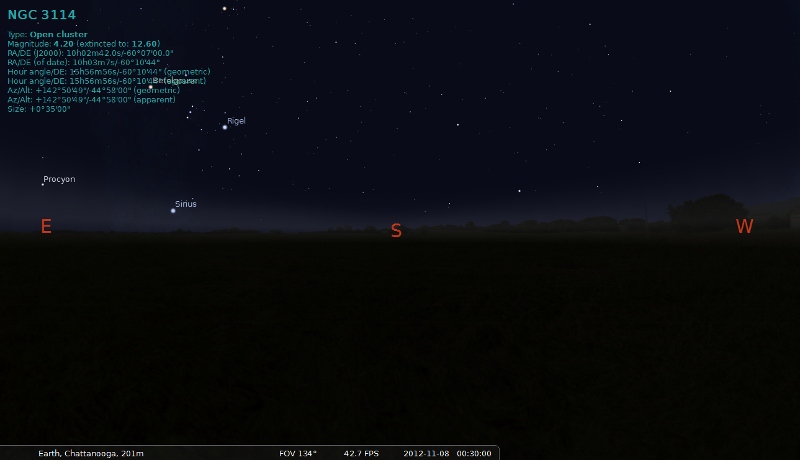
Take care and much love.
Ascension211


Take care and much love.
Ascension211
reply to post by ascension211
The date was 11-8-12, at 12:30 in the morning. Just turned 11-8-12.
Hummm............ I'm not sure. I'll have to notice where Orion is in the sky when I go back to work Sunday night.
Thanks for the update.
ETA: I just went outside at my house which is north from where I work. I don't see it anywhere. It may be too early.
I'll go out at midnight and see if I can locate it then.
The date was 11-8-12, at 12:30 in the morning. Just turned 11-8-12.
Hummm............ I'm not sure. I'll have to notice where Orion is in the sky when I go back to work Sunday night.
Thanks for the update.
ETA: I just went outside at my house which is north from where I work. I don't see it anywhere. It may be too early.
I'll go out at midnight and see if I can locate it then.
edit on 11/9/2012 by sled735 because: addition to comment
reply to post by sled735
Sirius and Procyon seem to be at the angle you were talking about! My guess in this instance would be Sirius.
Sirius and Procyon seem to be at the angle you were talking about! My guess in this instance would be Sirius.
Originally posted by ascension211
reply to post by sled735
Sirius and Procyon seem to be at the angle you were talking about! My guess in this instance would be Sirius.
I just came back from having a look outside. I think it may be Procyon. Still blinking its butt off!
Rigel! LOL just a while ago I glanced out of my window and was like what is that!? LOL I knew it was a star it wasn't moving, and had to check it
out! I used Star Walk app on my iPad and saw it was indeed Rigel. Sirius isn't up where I can see it yet, but will be soon!
edit on 9-11-2012
by WhoDat09 because: (no reason given)
reply to post by sled735
Talk about timing; right after your last e-mail, the lights went out here in Brazil. Where I live and many cities in our state lost power for 6 hrs. I saw something that was very strange; I am going to tell about it in another thread after I see what happens tonight. I know it was not a star, planet, plane or top of a building. I was not able to get pictures because it was to far for my camera (crappy old digital) to show any detail. I did take a picture when the Sun came up of the area I was looking at. Just to document my view. More to come soon!
Talk about timing; right after your last e-mail, the lights went out here in Brazil. Where I live and many cities in our state lost power for 6 hrs. I saw something that was very strange; I am going to tell about it in another thread after I see what happens tonight. I know it was not a star, planet, plane or top of a building. I was not able to get pictures because it was to far for my camera (crappy old digital) to show any detail. I did take a picture when the Sun came up of the area I was looking at. Just to document my view. More to come soon!
edit on 11/10/2012 by ascension211 because: grammar!
reply to post by Unity_99
Thanks, I think? LOL. Could you dumb down the questions for me? Not sure what it is you are asking or suggesting?
Does this have to do with my other thread;
Screen Shots From Stellarium (Hope they all post) 2012+
www.abovetopsecret.com...
or;
12-21-2012 and the Mayan Calendar (sorry about the last thread everyone)
www.abovetopsecret.com...
Thanks, I think? LOL. Could you dumb down the questions for me? Not sure what it is you are asking or suggesting?
Does this have to do with my other thread;
Screen Shots From Stellarium (Hope they all post) 2012+
www.abovetopsecret.com...
or;
12-21-2012 and the Mayan Calendar (sorry about the last thread everyone)
www.abovetopsecret.com...
reply to post by Dr Expired
Thank you. I will find your threads and give a look. Feel free to post any pertinent threads here!
Thank you. I will find your threads and give a look. Feel free to post any pertinent threads here!
reply to post by ascension211
The first link. Dumb down the questions? Not quite sure what that means, sorry. Love & Light!
Stars are like cyrstal mirrors.
They found nano diamonds in candle light.
The diamond planets in the NASA discoveries.
We're on the other side of the cyrstal mirror.
Where does the Light come from?
What happens when the diamonds line up!
Sun, Alcyone, Center of the Galaxy and the Great Central Universal Sun (thought there is no center in infinity).
I'm waiting for a big upgrade, where we're all freed, and the other side counseled and healed. For Love heals and doesnt hand anyone over to dark side, though there is free will.
The first link. Dumb down the questions? Not quite sure what that means, sorry. Love & Light!
Stars are like cyrstal mirrors.
They found nano diamonds in candle light.
The diamond planets in the NASA discoveries.
We're on the other side of the cyrstal mirror.
Where does the Light come from?
What happens when the diamonds line up!
Sun, Alcyone, Center of the Galaxy and the Great Central Universal Sun (thought there is no center in infinity).
I'm waiting for a big upgrade, where we're all freed, and the other side counseled and healed. For Love heals and doesnt hand anyone over to dark side, though there is free will.
edit on 10-11-2012 by Unity_99 because: (no reason given)
Crystalline Light, like in my pictures of the Sunlight I keep taking.
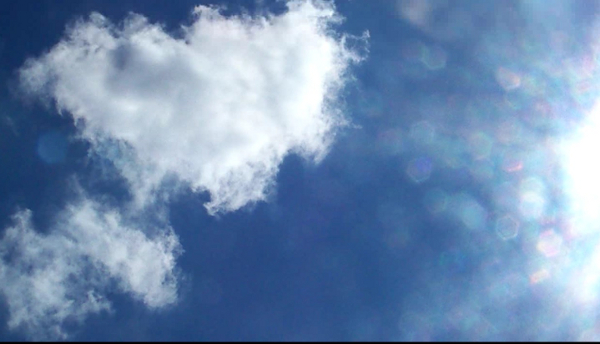
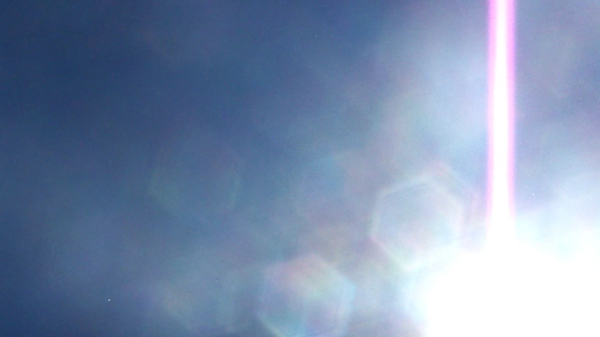
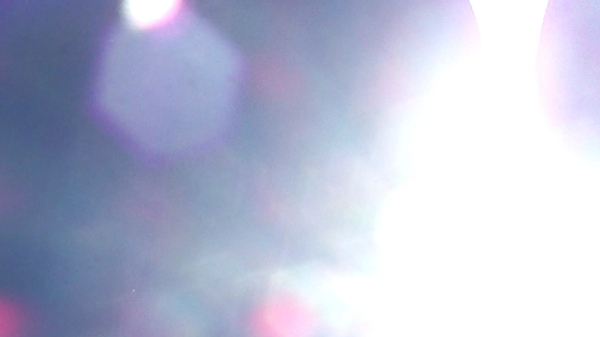
The crystal shape of the pineal crystal transmitters, the ones we're born with.
The shape of solomon's seal as well.
www.aloha.net...
My birthchart has capstone and half of solomon's seal, so always find that interesting.
But I find the sun and stars very fascinating. We're not living in a concrete "marble materialism" universe. It's something else.



The crystal shape of the pineal crystal transmitters, the ones we're born with.
The shape of solomon's seal as well.
www.aloha.net...
My birthchart has capstone and half of solomon's seal, so always find that interesting.
But I find the sun and stars very fascinating. We're not living in a concrete "marble materialism" universe. It's something else.
reply to post by Unity_99
Interesting philosophy. Semantics I say for a different way to say the same thing I feel. We are all Pure energy and attached to all other energy throughout the Universe. Multiple dimensions, multiple Universes.
3 threads I wrote might interest you. I would certainly like to hear your opinions about each if you have the time. I just wrote another thread about the coming eclipse.
www.abovetopsecret.com...
www.abovetopsecret.com...
www.abovetopsecret.com...
Thanks for sharing!
Ascension211
Interesting philosophy. Semantics I say for a different way to say the same thing I feel. We are all Pure energy and attached to all other energy throughout the Universe. Multiple dimensions, multiple Universes.
3 threads I wrote might interest you. I would certainly like to hear your opinions about each if you have the time. I just wrote another thread about the coming eclipse.
www.abovetopsecret.com...
www.abovetopsecret.com...
www.abovetopsecret.com...
Thanks for sharing!
Ascension211
reply to post by ascension211
And sometimes they end up being airport runway landing markers. lmao. The lights I kept seeing last night were part of the runway system, weird thing is, tonight I can see them all, last night they were all out except this one group that kept flashing and fading.
And sometimes they end up being airport runway landing markers. lmao. The lights I kept seeing last night were part of the runway system, weird thing is, tonight I can see them all, last night they were all out except this one group that kept flashing and fading.
new topics
-
Kurakhove officially falls. Russia takes control of major logistics hub city in the southeast.
World War Three: 7 minutes ago -
Liberal Madness and the Constitution of the United States
US Political Madness: 6 hours ago
top topics
-
New York Governor signs Climate Law that Fines Fossil Fuel Companies
US Political Madness: 13 hours ago, 16 flags -
Liberal Madness and the Constitution of the United States
US Political Madness: 6 hours ago, 6 flags -
Kurakhove officially falls. Russia takes control of major logistics hub city in the southeast.
World War Three: 7 minutes ago, 0 flags
active topics
-
Kurakhove officially falls. Russia takes control of major logistics hub city in the southeast.
World War Three • 0 • : Imhere -
JILL BIDEN Wants JOE to Punish Democrats Who Forced Him to Leave Office in Disgrace on 1.20.2025.
2024 Elections • 17 • : angelchemuel -
Petition Calling for General Election at 564,016 and rising Fast
Political Issues • 172 • : angelchemuel -
This is why ALL illegals who live in the US must go
Social Issues and Civil Unrest • 28 • : Xtrozero -
Happy Hanukkah…
General Chit Chat • 24 • : mysterioustranger -
New York Governor signs Climate Law that Fines Fossil Fuel Companies
US Political Madness • 19 • : xuenchen -
UK Borders are NOT Secure!
Social Issues and Civil Unrest • 12 • : angelchemuel -
Post A Funny (T&C Friendly) Pic Part IV: The LOL awakens!
General Chit Chat • 7961 • : PinkFreud -
‘Something horrible’: Somerset pit reveals bronze age cannibalism
Ancient & Lost Civilizations • 28 • : Flyingclaydisk -
New Footage - Randy Rhoads 1979 LIVE Guitar Solo Footage at the Whisky - Pro Shot
Music • 1 • : gortex
